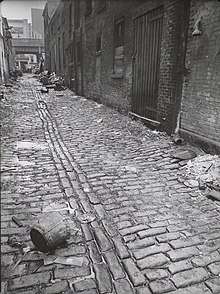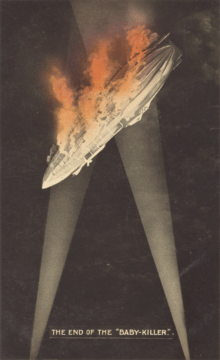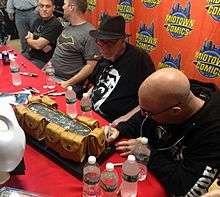
Batman's rich history allows him to be interpreted in a multitude of ways. To be sure, this is a lighter incarnation, but is certainly no less valid and true to the character's roots then the tortured avenger, crying out for mommy and daddy. ~ Batman: The Brave and the Bold
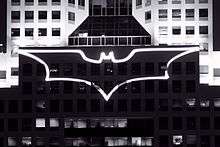
It's not who I am underneath, but what I do that defines me. ~ Batman Begins
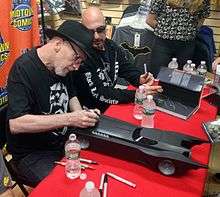
Batman is a comic book character from DC Comics that has also been featured in many films and TV shows:
- The Tim Burton films
- Batman (1989)
- Batman Returns (1992)
- The Joel Schumacher films
- Batman Forever (1995)
- Batman & Robin (1997)
- Animated revival
- Batman: The Animated Series (aka The Adventures of Batman and Robin) (1992–1995)
- Batman: Mask of the Phantasm (1993)
- Batman and Mr. Freeze: Subzero (1998)
- The New Batman Adventures (1997–1999)
- Batman Beyond (1999–2001)
- Justice League (2001–2006)
- The Batman (2004–2008)
- The Batman vs. Dracula (2005)
- Justice League: The New Frontier (2008)
- Batman: Gotham Knight (2008)
- Batman: The Brave and the Bold (2008-2011)
- Superman/Batman: Public Enemies (2009)
- Justice League: Crisis on Two Earths (2010)
- Superman/Batman: Apocalypse (2010)
- Justice League: Doom (2012)
- Beware the Batman (2013-2014)
- Justice League: The Flashpoint Paradox (2013)
- Justice League: War (2014)
- Son of Batman (2014)
- Batman: Assault on Arkham (2014)
- JLA Adventures: Trapped in Time (2014)
- Justice League: Throne of Atlantis (2015)
- Batman vs. Robin (2015)
- Justice League: Gods and Monsters (2015)
- Batman: Bad Blood (2016)
- Justice League vs. Teen Titans (2016)
- Justice League Dark (2017)
- Batman: The Animated Series (aka The Adventures of Batman and Robin) (1992–1995)
- The Christopher Nolan films
- Batman Begins (2005)
- The Dark Knight (2008)
- The Dark Knight Rises (2012)
- The Arkhamverse games
- Batman: Arkham Asylum (2009)
- Batman: Arkham City (2011)
- Batman: Arkham Origins (2013)
- Batman: Arkham Knight (2015)
- DC Extended Universe
- Batman v Superman: Dawn of Justice (2016)
- Suicide Squad (2016)
- Justice League (2017)
About Batman
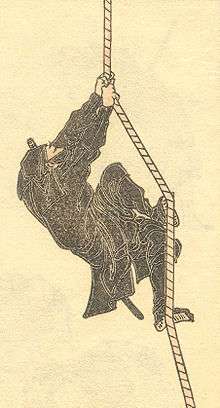
I've always preferred Batman to Superman because Batman's stunts are at least theoretically possible. When he swings from the Playboy Building to the John Hancock Center, he uses a rope. Meanwhile, Superman is holding up toppling skyscrapers and stopping bullets with his teeth. ~ Roger Ebert
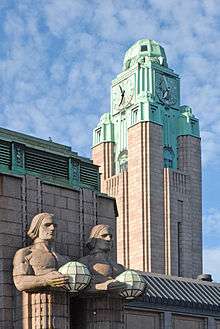
By throwing Gotham into chaos and testing the limits to which Batman holds himself, The Joker is not merely plying death and destruction but willfully destroying the philosophical foundations of organized society. ~ Todd Gilchrist

He’s a rich man who beats up poor people. It’s quite a bizarre mission to go out at night dressed as a bat and punch the hell out of junkies. And then he goes home and lives in this mansion. There’s an aspirational quality to him—he’s an outlaw and he can buy anything. ~ Grant Morrison
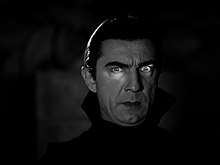
So we need a Batman and something that has been bouncing around in the back of my head, for decades probably, is a quote from Bob Kane. I remember reading where he said Batman is half Dracula and half Zorro, and that’s part of the appeal of Batman. That he’s dark and spooky-looking, and he’s got that badass costume and the bat imagery. ~ Bruce Timm
- For this film, I had something to say about Bruce Wayne as a character, what his motivations are. That there’s something dark and wrong about what drives him. Batman is a super hero and he does good. But I think the Bruce Wayne part of the character’s motivation is slightly twisted. Bruce’s motivations don’t come from a good place. He’s angry and, in that revenge is really his goal, he’s a dishonest character. That’s why he has to wear a mask. He’s doing good, but he’s not doing all the right things for all the right reasons.
- Brian Azzarello, "Interview Brian Azzarello on Batman Gotham Knight", Major Spoilers, (05/09/2008).
- With all of this stunning technology, questions remain. Do Batman's gadgets and vehicles have any connection to the real world? Do grapnel guns, body armor, and rocket-booster cars really exist? You bet-and the real-world connections stretch further than you've ever imagined. From wingsuits to stealth fighters jets to police duty belts, real-life connections abound. Batman may fight evil in a fictional world, but much of his gear is rooted in reality.
- Agnieszka Biskup, Tammy Enz, “Batman Science: The Real-world Science Behind Batman's Gear”, (2014), p. 5.
- Is Batman gay? Well, no: Batman, after 73 years of publication, with appearances on TV, in video games, movies and comics, can never be tied down to any one identity. Batman has been a ridiculous boy-scout, a fearsome vigilante, a protective father, a loner, a clown. Batman is a myth and a mosaic, an icon who catches the light at different angles at different times, and takes multiple forms. But gayness – from high camp to intense homoeroticism – is an important aspect of that icon.
This reading is nothing new. Media scholar Andy Medhurst outlined it in an important 1991 article, Batman, Deviance and Camp. In the 60s, George Melly remarked of the Adam West TV show: "We all knew Robin and Batman were pouves." And in the 50s, young boys supposedly confessed to psychiatrist Fredric Wertham that they fantasied about sharing a bedroom with Batman.
Whenever that interpretation raises its head, it meets resistance. In the 50s, the accusations that Bruce and Dick "Robin" Grayson represented "a wish-dream of two homosexuals living together" went to a Senate subcommittee hearing, and the comic-book editors responded by bringing in Batgirl and Batwoman, double-dates for the dynamic duo. In the late 60s, DC Comics commissioned a new team to rebrand Batman with hard-boiled, street-level stories intended to wipe out the memory of Adam West's TV show.- Will Brooker, "Batman Can't Come Out as Gay – His Character Relies on Him Being in Denial", The Guardian, (28 May, 2012).
- Bat-Mite: "Batman's rich history allows him to be interpreted in a multitude of ways. To be sure, this is a lighter incarnation, but is certainly no less valid and true to the character's roots then the tortured avenger, crying out for mommy and daddy." And besides, those Easter bunnies looked really scary, right?
- Paul Dini, "Legends of the Dark Mite!", Batman: The Brave and the Bold, (May 29, 2009).
- I've always preferred Batman to Superman because Batman's stunts are at least theoretically possible. When he swings from the Playboy Building to the John Hancock Center, he uses a rope. Meanwhile, Superman is holding up toppling skyscrapers and stopping bullets with his teeth.
- Roger Ebert, reviewing the film "Darker Than Amber" RoberEbert.com, (1971).
- Bob Kane...had an idea for a character called 'Batman', and he'd like me to see the drawings. I went over to Kane's, and he had drawn a character who looked very much like Superman with kind of ... reddish tights, I believe, with boots ... no gloves, no gauntlets ... with a small domino mask, swinging on a rope. He had two stiff wings that were sticking out, looking like bat wings. And under it was a big sign ... BATMAN.
- Bill Finger as quoted in Steranko, Jim (1970). The Steranko History of Comics. Reading, Pennsylvania: Supergraphics. p. 44. ISBN 0-517-50188-0.
- Bruce Wayne's first name came from Robert Bruce, the Scottish patriot. Wayne, being a playboy, was a man of gentry. I searched for a name that would suggest colonialism. I tried Adams, Hancock ... then I thought of Mad Anthony Wayne.
- Bill Finger as quoted by Kane, Bob; Tom Andrae (1989). Batman & Me. Forestville, California: Eclipse Books. p. 44. ISBN 1-56060-017-9.
- I knew many homosexuals but I certainly didn’t think of Batman in those terms. I thought of it in terms of … Frank Merriwell and Dick Merriwell, his half-brother, who was the kid he was taking care of. … In America we always talk about the Western hero and the pioneer kind of man—the Davy Crockett types—as being loners. They’re never really. They always have a sidekick. … Certainly there’s no homosexual relationship. It’s just part of the American syndrome. … It was just that the author realized that you’ve gotta have somebody to talk to. Sherlock Holmes had Watson—were they homosexuals? Baloney. You just can’t have your hero walking around thinking aloud all the time. He’d be ready for the men in white coats after a time. So we created a junior Watson and that’s all [Robin] was.
- Bill Finger "Batman and Robin Gay Bill Finger Said", (1972).
- Robin was an outgrowth of a conversation I had with Bob. As I said, Batman was a combination of Douglas Fairbanks and Sherlock Holmes. Holmes had his Watson. The thing that bothered me was that Batman didn't have anyone to talk to, and it got a little tiresome always having him thinking. I found that as I went along Batman needed a Watson to talk to. That's how Robin came to be. Bob called me over and said he was going to put a boy in the strip to identify with Batman. I thought it was a great idea.
- Bill Finger; Steranko, Jim (1970). The Steranko History of Comics. Reading, Pennsylvania: Supergraphics. p. 44. ISBN 0-517-50188-0.
- More important than this, however, is the idea that Batman is not just a guy in a suit, but a symbol and there are people in the film most notably The Joker who want to destroy that symbol. While Batman's identity remains secret and his motives unknown to Gothamites, he represents hope in a city that has little to spare and embodies a pursuit of justice and further, a code of behavior that quite literally threatens these criminals' way of life. By throwing Gotham into chaos and testing the limits to which Batman holds himself, The Joker is not merely plying death and destruction but willfully destroying the philosophical foundations of organized society. The closest such examination another comic book-oriented film has ever attempted was the emotional throughline of the Spider-Man films. Peter Parker's struggle was almost exclusively personal, whereas Wayne not only has to find a way to maintain his moral compass, but consider what the repercussions of his heroism are to both the public and the criminals themselves.
- Todd Gilchrist, The Dark Knight", IGN, 30 JUN 2008.
- I made Batman a superhero-vigilante when I first created him. Bill turned him into a scientific detective.
- Bob Kane; Tom Andrae (1989). Batman & Me. Forestville, California: Eclipse Books. p. 44. ISBN 1-56060-017-9.
- Q: One of the things that led you to create Dark Knight Returns was a series of muggings. What happened?
- Frank Miller: There's something demeaning about the first time you're knocked to the ground and punched in the stomach and have a gun waved in your face and realize that you're completely at somebody's mercy. And they can take your [[life]. And at that point, you'll do anything. There's something so humiliating about that. And to me that made me realize that Batman was the most potent symbol DC had in its hands. Sure, Superman can fly, but Batman turns me back into that guy who is scared and at the same time the guy who can come and save him. It's a perfect myth.
- Frank Miller in “A Rare Interview With Frank Miller: 'Dark Knight,' the Unmade Darren Aronofsky Batman Movie, and Donald Trump“ by Borys Kit,Hollywood Reporter, (March, 03, 2016).
- He’s a rich man who beats up poor people. It’s quite a bizarre mission to go out at night dressed as a bat and punch the hell out of junkies. And then he goes home and lives in this mansion. There’s an aspirational quality to him—he’s an outlaw and he can buy anything. He has a new Batmobile every movie. He’s very plutonian in the sense that he’s wealthy and also in the sense that he’s sexually deviant. Gayness is built into Batman. I’m not using gay in the pejorative sense, but Batman is very, very gay. There’s just no denying it. Obviously as a fictional character he’s intended to be heterosexual, but the basis of the whole concept is utterly gay. I think that’s why people like it. All these women fancy him and they all wear fetish clothes and jump around rooftops to get to him. He doesn’t care—he’s more interested in hanging out with the old guy and the kid.
- Grant Morrison, Playboy Magazine, quoted in "Grant Morrison: ‘Batman Is Very, Very Gay’", Andy Hunsaker, Crave Online, (Apr 26th, 2012).
- Creatively, it was ninety-eight percent Bill and one percent Bob, and the rest is in the ether. We don’t know. It was so much more Bill from the get-go, creatively. Bob Kane had financial advice that served him well. But as far as the major elements of Batman, the example I like to give – it’s probably even in the film, because I say it so much – if you just stop a random grandmother on the street and say, ‘Name something you know about Batman,’ first of all, she’ll know something. Everybody knows something. And whatever that person says will be a Bill Finger contribution. He was that pervasive in the creation of Batman.
- Marc Tyler Nobleman, Hulu documentary “BATMAN AND BILL” – Interview with the Creators, Abbie Bernstein, Buzzy Mag, (July 13, 2017).
- I don't like his other work; I think its shallow and badly written. I mean, I've got kids who like superheroes, and they think the Batman films are boring and pretentious. They like things like The Avengers and Iron Man because they're fun.
- Christopher Priest interview in Skript; as quoted in 'Prestige' Author Slams Christopher Nolan's 'Dark Knight' Trilogy As "Shallow" And "Badly Written", by Abid Rahman, Hollywood Reporter, (11/28/2014).
- It's a wrong move to take a superhero and give it psychological realism. There is no psychological realism. He's a bodybuilder who jumps off buildings. I'm sorry I feel really strongly about this.
- Christopher Priest interview in Skript; as quoted in 'Prestige' Author Slams Christopher Nolan's 'Dark Knight' Trilogy As "Shallow" And "Badly Written", by Abid Rahman, Hollywood Reporter, (11/28/2014).
- As Kane tells it, the pre-teen Bruce is out at night (circa 1924) with his parents when an armed mugger kills both of them. The orphaned lad, his hands clasped in prayer, his bedroom illuminated by a single candle, swears 'to avenge their deaths by spending the rest of my life warring on all criminals'. He 'becomes a master scientist' and 'trains his body to physical perfection' and, because 'criminals are a superstitious cowardly lot', chooses to become 'a creature of the night, black, terrible... a bat... the Batman'. From these two garishly printed pages, Nolan and Goyer have fashioned a whole movie.
- Marc Savlov, "Batman Begins", Austin Chronicle, (JUNE 17, 2005).
- All superheroes are black sheep. But the Dark Knight has always been murkier than most. His superpowers are not an accident of birth, or of stumbling into the wrong lab at the wrong time. They're not powers at all, simply a simulation made possible by good fortune and the leisure that accompanies it. Bruce Wayne can splurge on the kit and cars to set himself up as a crime-fighting Christ substitute, plus power and glitter enough to hide his hobby. He's always been a curious idol: within aspiration because he's flesh and blood; beyond it because he's the lucky recipient of inherited wealth.
So it should be no surprise that The Dark Knight Rises so firmly upholds the financial status quo. Christopher Nolan's film indulges in much guttural talk of the gap between the 99% and the 1%, but it is the former who are demonised, whose revolting actions require curbing and mutinous squeals muting. Your average Joe, it turns out, requires a benevolent, bad-ass billionaire to set him straight, to knock him sideways, if necessary.- Catherine Shoard, "Dark Knight Rises: fancy a capitalist caped crusader as your superhero?", The Guardian, (July 17, 2012).
- So we need a Batman and something that has been bouncing around in the back of my head, for decades probably, is a quote from Bob Kane. I remember reading where he said Batman is half Dracula and half Zorro, and that’s part of the appeal of Batman. That he’s dark and spooky-looking, and he’s got that badass costume and the bat imagery. So I always wanted to go all the way with it and actually make him a vampire. One episode of Batman: The Animated Series, back in the day twenty years ago, we actually wanted to turn Batman temporarily into a vampire but Fox Kids wasn't having any of that.
- Bruce Timm, "Den of Geek, Bruce Timm Interview Justice League Batman Harley Quin More", John Saavedra, Den of Geek, (June 8, 2015).
- Human psychology has two basic reactions to images of darkness and horror: the first is to be horrified, as if we saw a monster; the second is to be curious what it would be like to horrify, as if we were the monster. For those of us who are not particular fans of stories told from the point of view of vampires, that curiosity can be made palatable if the horrific monster preys only on the guilty. Bats are creepy—but there are creeps in the world who deserve to be scared. For them, there is the Batman.
- John C. Wright, "Heroes of Darkness and Light" in: Batman Unauthorized: Vigilantes, Jokers, and Heroes in Gotham City (2008) (excerpt).
Travis Langley, “A Dark and Stormy Knight: Why Batman?”, Psychology Today, (Aug 12, 2012)
- Looking at Superman psychologically means looking at modern mythology. He's the modern demigod myth. While there's something mythic about Batman too, to be sure, he's more akin to the mortal legends like Robin Hood and pulp heroes like Zorro and the Shadow, extraordinary men but men nonetheless.
- Where Superman drew his might from the Earth's sun, Batman found his in a city's darkness. Jerry and Joe played with the bright and impossible. Bob Kane and Bill Finger, in creating Batman, expanded the meme by adding the coin's other side, the dark and improbably possible.
- The Shadow archetype represents your own dark side, not necessarily your evil side but the part of you that is hidden, out of the light, the sum of those characteristics you conceal from both the world and yourself. Bruce Wayne confronts his own darkest nature early in life, chooses to work with it, and uses it to instill fear in others. His bright and dark sides work together to fight evil. From a Jungian perspective, therefore, Batman appeals to our own need to face and manage our own Shadow selves. We want Batman in our shadows.
- Because Batman is fully human and because a horrible trauma leads him to wear a mask and wage his war on crime, we can contemplate real psychological issues that drive people to do extreme things. Psychologists can examine how well he does or does not fit the symptoms of a variety of disorders. Nobody thinks it's weird for Superman to apply his natural gifts to help the members of this human race in a manner that keeps him above it all. When a guy runs around dressed like a bat, we have to wonder: Why the mask, the bat, and the underage partner? Why does he really wear a costume to fight crime? Why are his most intimate relationships with "bad girls" he ought to lock up? And why won't he kill that homicidal clown?
- "Bill and I discussed it," Kane recalled (Daniels, 1999, p. 31), "and we figured there's nothing more traumatic than having your parents murdered before your eyes." Losing one's parent or parents when old enough to know about it ranks as the single most stressful common life event children can experience (e.g., Monaghan, Robinson, & Dodge, 1979). Uncommon traumas like torture or terrorist attacks are not universal experiences, not things most of us can anticipate, but sooner or later we all learn that our parents can and will die.
- Why don’t children fear this hero who dresses like a monster? Because he’s their monster. He’s ours. Even when children learn that magic will not save them nor will a hero in blue fly out of the sky, so they develop more realistic hopes, they can still hope that when they can't find the strength to stand up to life's bullies, someone who is strong and capable might do the right thing and help. In Batman, they see the wounded boy who makes himself big and strong enough to turn fear against the fearsome. With both brain and brawn, he’s the part of us that wants to scare life’s bullies away.
Dialogue
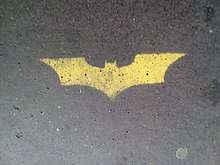
I haven't been a kid since I was eight years old.
- Batman: And no choice! Who elected you, anyway?
- Lord Batman: Who elected you? The problem with democracy is, it doesn't keep you very safe.
- Batman: It has other virtues. But you seem to have forgotten that.
- Lord Batman: I didn't forget! I just chose peace and security instead.
- Batman: You grabbed power!
- Lord Batman: And with that power, we've made a world where no eight-year-old boy will ever lose his parents...because of some punk with a gun!
- Batman: ...you win.
- Stan Berkowitz, Justice League (TV series), "A Better World", (November 1, 2003)
- Bruce Wayne: Commissioner. What can I do for you?
- Gordon: Drop the act. Ten minutes on Barbara's computer told me everything. Like a fool I allowed you to run wild on your private crusade. A psychotic misfit playing masked hero. Now I've paid for it with Barbara's life.
- Bruce Wayne: Jim, believe me, I know how you feel.
- Gordon: You can't.
- Wayne: You know how I lost my parents. The only way I could hold onto my own sanity was to take matters into my own hands.
- Paul Dini, "Over the Edge", The New Batman Adventures, (May 23, 1998)
- Wonder Woman: Circumstances asides, it was kind of... enjoyable being a kid again.
- Batman: I haven't been a kid since I was eight years old.
- Henry Gilroy, "Kid's Stuff", Justice League Unlimited, (August 14, 2004)
- Superman: Do I look like Batman to you?
- The Flash: Actually, you kind of do. Especially when you're all scowly like that.
- Dwayne McDuffie, "Flashpoint", Justice League Unlimited, (July 2, 2005)
- Amanda Waller: Stop me if you've heard it before - you're eight years old. Your parents have just taken you to a rousing adventure film - a grand time is had by all. But unknown to you, a mysterious figure hides in the shadows. My plan was simple - the killer would leap out at you and kill your family. The trauma would put you on the path to becoming Batman. One problem - my assassin wouldn't pull the trigger. I argued with her, but deep down, I knew she was right. People say Batman's obsessive, that he'd do anything to achieve his goals - but he'd never resort to murder. So if I was to honor all he stood for, neither could I.
- Bruce Timm, Dwayne McDuffie, "Epilogue", Justice League Unlimited, (July 23, 2005)
In popular culture
.jpg)
I know I'm not Batman. You could try not being a jerk.
- Abed Nadir: I know I'm not Batman. You could try not being a jerk.
- Tim Hobert and Jon Pollack, "Introduction to Statistics", Community, (October 29, 2009).
- Dr. Thaddeus "Rusty" Venture: We were robbed. No two ways about it.
- Dean Venture: I don’t know, pop, they won fair and square. The Impossible family made a really convincing Fantastic Four.
- Dr. Venture: Don’t make excuses for your brother, Dean. He blew it for all of us. Henry Alan Venture! Are you hearing this? What do you have to say for yourself?
- Hank Venture: (in a low voice) I am the Bat.
- Dr. Venture: Yes, yes, you’re “The Bat”! And the Bat is the reason we didn’t win best costume, mister, again! Last year it was Dorothy, the Scarecrow, the Cowardly Lion and “The Bat”!. Oh and how about the time we were the hard rocking quartet of Gene Simmons, Paul Stanley, Ace Frehley, and the Bat?!
- Hank: The night is mine.
- Dr. Venture: Sell it somewhere else, Hank. It’s not me you should be apologizing to. Poor Brock spent a month sewing his group theme appropriate costume.
- Hank: That’s probably why he won best costume?
- Dr. Venture: What is that, Sass I hear? (sarcastically) “Oh, look everybody! Hank’s back”!
- Jackson Publick, “Love-Bheits”, The Venture Bros., (August 20, 2006).
See also
This is a disambiguation page; that is, one that points to other pages that might otherwise have the same name. If you followed a link here, you might want to go back and fix that link to point to the appropriate specific page.
This article is issued from
Wikiquote.
The text is licensed under Creative
Commons - Attribution - Sharealike.
Additional terms may apply for the media files.
